Currently Empty: £0.00

A Simple Guide to Air-Drying Herbs
As we head into the latter part of the year, we start thinking about storing summer herbs for use throughout winter. Knowing how to dry herbs is useful all year round though as some herbs are in their medicinal or flavour prime at certain points during the year. Bringing together the advice and wisdom shared by Barbara Wilkinson (trustee) on our instagram page, here you’ll find a quick how-to guide for air-drying herbs.
Written and edited by Ghislaine Howard, information provided by Barbara Wilkinson
Common questions about drying herbs centre around where you can dry them. The key is to have a space out of direct sunlight with plenty of air flow. An easy place is an airing cupboard, however, if you don’t have one, you could also use a stair case out of the sun, a shed, or a shadier corner.
Depending on what you are drying – full stems, just flower heads, seed pods or leaves – gather them together, bind them at the base of the stem and hang them upside down or, place them on a drying rack. You might not have a drying rack, but do not worry, you can use oven racks with a layer of thin fabric (muslin or light cotton for example) which will raise the herbs off of the flat surface and allow for air to circulate underneath.
Prior to drying, it’s a good idea to lay your harvest out on white paper. Once you’ve done this start looking for and removing all the unwanted bugs that may be hiding and for areas where birds may have been. Afterwards, you can choose whether to gently wash everything too – skip this step if you’re working with particularly delicate flowers such as nasturtiums and hawthorn blossom. If you’re not washing your harvest, try to be extra diligent.
To air dry any part of a plant the air needs to be dry, so watch out for rain and wait if you’ve recently had a downpour. Another great tip – harvest in the morning, when the oils and essences of a plant are at their richest.
Air-drying herbs takes time and requires patience, however it’s also very simple. Once they are completely dry, store in air tight containers and continue to keep out of direct sunlight.
If using your dried herb for a medicinal purpose, first it’s best to seek advice from a qualified medicinal herbalist, but it is also important to recognise that each herb is unique and that how you harvest and store them can affect their properties. Therefore, to ensure you’ll get the best out of your crop, always ask about the best method.



